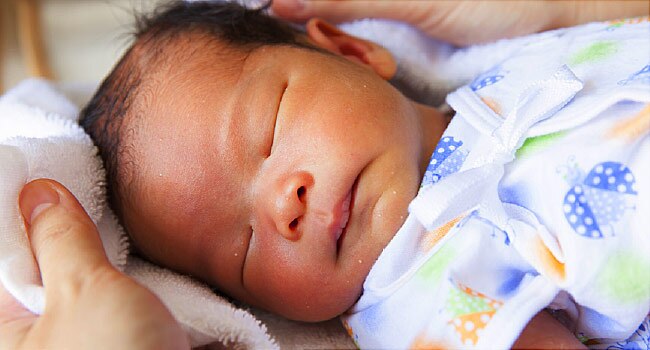©2019 All rights reserved. Chinaunicare.com All rights reserved
NEWS
7 Tips for Baby Skin Care
7 Tips for Baby Skin Care
Your baby’s skin is extra-sensitive, so proper care is essential.
“Babies’ skin is thinner and more prone to irritation, but it’s very resilient,” says Bruce Brod, MD, a dermatologist in Philadelphia.
The good news: The best baby skin care tips are the simplest. “Less is more, and it’s more cost-effective, too,” Brod says.
Choose Few Ingredients
Scan labels and choose products with the fewest ingredients and no parabens, formaldehydes, or fragrances, says Megha Tollefson, MD, a pediatric dermatologist at the Mayo Clinic. “Many of the products I recommend are not marketed toward babies, since most of those have fragrances that can be irritating,” she says.
- Cleanser: Soap-free liquids are a good choice. “It doesn’t need to lather to be clean,” says New York City-based dermatologist Bruce Robinson, MD.
- Shampoo: Tearless is best.
- Diaper cream: Use petroleum jelly or a zinc oxide cream.
- Wipes: Go alcohol-free or skip them altogether. Wipes can sometimes irritate a baby’s skin. “The safest option is water and a washcloth,” Tollefson says.
- Moisturizer: Pediatric dermatologists say petroleum jelly is “the gold standard,” Tollefson says. “It’s greasy but cheap and effective,” especially against skin problems like eczema. Otherwise, choose creams or ointments over lotions.
- Laundry detergent: The kinds made for babies are fine but not necessary for most kids. But try to go fragrance-free. Liquid rinses out better than flakes.
Bathe Just What’s Necessary
To avoid irritation and dryness, your baby only needs three baths per week. But more often is fine to clean away dirt and bacteria, depending on the season, humidity, and how active they are, Brod adds.
Until the umbilical cord falls off, sponge-bathe your newborn using a clean, damp washcloth. Focus on creases (armpits, neck, knees, behind ears, toes, and genitals). “Skin-to-skin contact increases humidity and bacteria growth,” Robinson says -- and that can make your little one start to stink. Plus there’s more dead skin in those creases.
“Use cleanser just in private areas and underarms. Once a week, do the whole body,” Robinson says. If your baby has hair, shampoo at each bath. If he gets oily, yellow scales or crusty spots on his head (called cradle cap), shampoo daily, rubbing his scalp with your fingertips.
Once he’s ready for baths, fill a towel-lined sink or a baby tub with 2 inches of plain water. “You don’t want your baby sitting in soapy water,” Robinson says, since that can dry out skin. And you can skip bath oils. Robinson says they don’t sink in and are a slipping hazard.
Change Diapers Often
Most diaper rash happens when babies sit in dirty diapers for too long. “When babies eat, they poop soon after. Stay on the lookout after you feed, and change them right away,” Robinson says.
To prevent chafing, use diaper cream at every change. “Apply like a thick layer of icing on cake,” Robinson says.
For rash-prone babies, disposable diapers may be better than cloth ones since they keep skin drier.
And use wipes only when there’s poop involved. “Even with gentle wipes, the preservatives irritate skin,” Robinson says.
Moisturize
A moisturizer may not be necessary for babies with normal skin, though most experts still recommend using it every day. Opt for one without fragrances or dyes.
If your baby’s skin is super-dry, moisturize twice daily or even after every diaper change. And rub it everywhere, “not just dry spots, since they tend to move around,” Robinson says.
Shield Skin From Spit
When babies teethe and eat, they drool. And saliva has enzymes that can irritate their skin. The problem gets worse when skin gets wet and dry over and over. So before you feed your baby, try coating his face with petroleum jelly. Wipe it off with a soft cotton washcloth when mealtime is over and reapply moisturizer.
Block the Sun
Early exposure to the sun’s UV rays puts kids at risk of skin cancer later in life -- especially infants, whose brand-new skin has less of the pigment that protects it from the sun.
For first 6 months, try to avoid any time in the sun. For babies of all ages, aim to stay inside between 10 a.m. and 3 p.m., when the sun is strongest. When you do head outside:
- Avoid direct sunlight. Use a stroller shade or an umbrella.
- Dress your baby in long sleeves and pants in tight weaves. “Hold a T-shirt to the sun. You’ll see how much light passes through,” Robinson says. He recommends rash guards to block the sun’s rays more fully.
- Use a wide-brimmed hat that covers your baby’s face and neck.
- Apply sunscreen. If you can’t avoid the sun, some sunscreen is OK even for the youngest babies. Just be careful when you put it around their eyes and mouth. Reapply every 2 hours or when baby gets wet. Robinson recommends broad-spectrum SPF 30 with zinc oxide. “It’s a physical block, so it starts working right away,” he says. “Plus it’s a mineral we ingest, so no one is allergic.”
Dress With Care
Wool, including cashmere, can be irritating. “Soft cottons are the way to go,” Robinson says. Be sure to wash anything that will touch your baby’s skin before she wears it.


